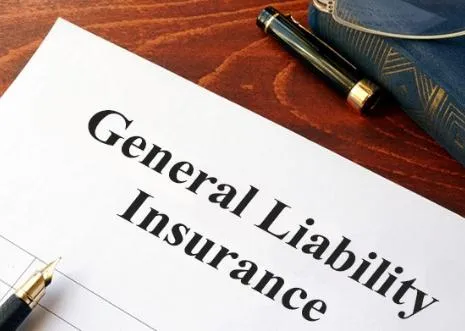When you run a business, it’s not just about providing excellent products or services—it’s also about protecting yourself from potential liabilities. General liability insurance is designed to shield your business from claims that could arise due to injuries or damages related to your operations. However, understanding how to navigate the claims process can seem daunting. In this article, we’ll provide you with a step-by-step guide to filing general liability insurance claims, ensuring you know exactly what to do when the need arises.
1. Understanding General Liability Insurance
Before diving into the claims process, it’s important to have a clear understanding of what general liability insurance covers. This type of insurance typically protects your business from:
- Bodily Injury: Claims arising from injuries to third parties on your premises or due to your business operations.
- Property Damage: Claims related to damages caused to someone else’s property.
- Personal Injury: Claims involving non-physical harm, such as defamation or invasion of privacy.
- Advertising Injury: Claims arising from advertising activities that may unintentionally infringe on others’ rights.
2. Recognizing When to File a Claim
Not every incident will warrant a claim. Here are some scenarios when you should consider filing a general liability insurance claim:
- An employee or customer is injured on your premises.
- Your business’s operations cause damage to a third party’s property.
- A lawsuit is filed against your business alleging bodily injury or property damage.
If any of these situations arise, it’s crucial to act quickly and follow the correct procedures to protect your interests.
Step 1: Gather Information and Documentation
The first step in filing a general liability insurance claim is to gather all relevant information and documentation related to the incident. This includes:
- Incident Details: Date, time, and location of the incident.
- Witness Information: Names and contact information of any witnesses.
- Photos and Evidence: Take clear photographs of the scene, including any damages or injuries.
- Medical Reports: If there are injuries, obtain medical documentation for your records.

Step 2: Notify Your Insurance Provider
Once you’ve gathered all necessary documentation, the next step is to notify your insurance provider. Here’s how to do it effectively:
- Contact Your Agent: Reach out to your insurance agent as soon as possible to inform them of the incident.
- Provide Details: Share all gathered information, including the nature of the claim, involved parties, and any evidence you’ve collected.
- Ask Questions: Don’t hesitate to ask your agent about the claims process, coverage details, and any specific requirements for filing a claim.
Step 3: Complete the Claim Form
Your insurance company will likely require you to fill out a claim form. Here’s how to do it:
- Provide Accurate Information: Fill out the form with accurate details regarding the incident, ensuring you include all necessary information.
- Attach Supporting Documents: Include all supporting documentation, such as photos, witness statements, and medical records.
- Review Before Submission: Double-check the form for any errors or omissions before submitting it to ensure a smooth claims process.
Step 4: Cooperate with the Investigation
After you submit your claim, your insurance provider will initiate an investigation. This may involve:
- Interviews: Your insurer may want to interview you, witnesses, and any involved parties to gather more information.
- Site Inspections: They might conduct an inspection of the location where the incident occurred.
- Review of Evidence: The insurer will review all submitted evidence to assess the validity of the claim.
Cooperation during this phase is vital; being responsive can help expedite the claims process.
Step 5: Review the Settlement Offer
Once the investigation is complete, your insurance provider will determine the validity of your claim and make a settlement offer if applicable. Here’s how to handle this stage:
- Understand the Offer: Carefully review the settlement offer to understand what is covered and what isn’t.
- Negotiate if Necessary: If you believe the offer doesn’t adequately cover your damages or losses, don’t hesitate to negotiate with your insurer.
- Consult Professionals: Consider consulting with a legal or insurance professional if you have concerns about the settlement amount.
Step 6: Finalize the Claim
Once you agree to the settlement offer, the final step is to close the claim:
- Sign Documentation: You may be required to sign a release form agreeing to the settlement terms.
- Receive Payment: After finalizing the paperwork, you should receive your settlement payment from your insurer.
Step 7: Learn from the Experience
After your claim is settled, take the time to reflect on the incident:
- Review Safety Protocols: Evaluate what led to the claim and consider implementing new safety measures or procedures to prevent similar incidents in the future.
- Adjust Coverage if Needed: Based on your experience, it may be wise to reassess your general liability insurance coverage limits or policy terms.
Conclusion
Navigating the claims process for general liability insurance doesn’t have to be overwhelming. By following these steps—gathering information, notifying your insurer, completing the claim form, cooperating during the investigation, reviewing the settlement offer, finalizing the claim, and learning from the experience—you can ensure that you’re adequately protected and that your business can move forward with confidence. Always remember, having the right insurance coverage is not just a safety net; it’s a crucial part of managing your business’s risk.
FAQs
- What is general liability insurance?
General liability insurance protects businesses from claims related to bodily injury, property damage, personal injury, and advertising injury. - When should I file a general liability claim?
You should file a claim if there’s an incident involving injuries or damages caused by your business operations. - What information do I need to gather for a claim?
Gather incident details, witness information, photos, and any medical reports related to the claim. - How do I notify my insurance provider?
Contact your insurance agent promptly, providing all relevant information about the incident. - What happens during the investigation?
The insurer will interview parties involved, inspect the site, and review evidence to assess the claim. - Can I negotiate the settlement offer?
Yes, if you believe the settlement doesn’t cover your damages adequately, you can negotiate with your insurer. - What should I do after my claim is settled?
Reflect on the incident, review safety protocols, and consider adjusting your insurance coverage if necessary.

